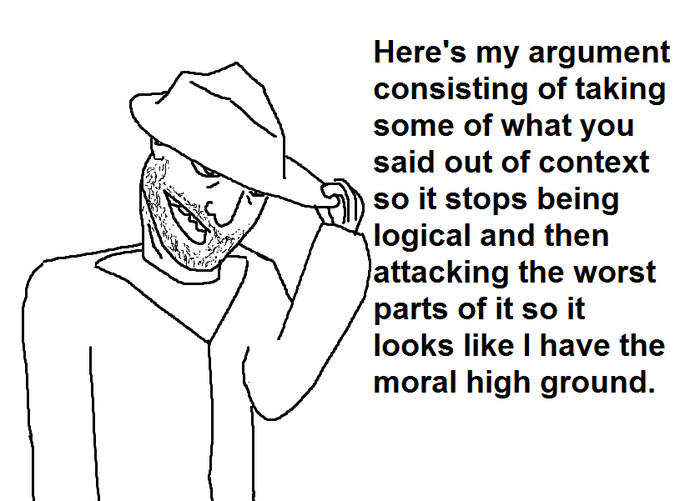Fourth hearing scheduled on August 31 back at Town Hall
By
Regina DeAngelo
Monday
night (August 22, 2022) at the Charlestown Elementary School, The Town Council
hosted a continuation of a public hearing on proposed new amendments to a
controversial residential development ordinance called “Residential
Conservation Development.”
Three strikes usually means you're out, but not for Ruth Platner
In a three-and-a-half-hour meeting, angry residents went to the podium to reiterate their objections to the original set of proposals, and the Council discussed new amendments that were just released by the Town Planner late Monday afternoon. At 10:45 pm, after public comment and Council discussion, the Council voted to adopt some of the new amendments and leave the rest, including the original amendments, to continued discussion on August 31 at 7 pm at Town Hall.
The original proposal, presented at the Town Council meeting on July 11, put forth amendments that would grant the Planning Commission new, far-reaching, vaguely defined powers to regulate the development of residential land in Charlestown. These were the proposed regulations that elicited the public outrage that led to the scheduling of last night’s special meeting.
The
original proposal had
changed the title of a zoning section from “Residential Cluster Subdivision” to
“Residential Conservation Development.” With it, the Planning Commission
proposed to set broad restrictions subject to the “discretion” and
“satisfaction of the Planning Commission” for residential development.Has Planning made the case their ordinance is necessary?
Among the original restrictions were new minimum lot sizes and new rules about how lots may now be subdivided. In certain zones, any development modifications to a lot area, lot shape or other dimensions would have to be approved by the Planning Commission under these broadened restrictions.
A controversial restriction would force a property owner looking to develop protected land in certain districts to give up 50% to 70% of their developable land to open space — an increase from the current 40%.
New amendments, delivered in memos to the Council between August 5 and August 22 and presented last night by Town Planner Jane Weidman, addressed permitted uses of land deemed a conservation development subdivision by the Planning Commission.
Among
these new amendments:
- Only single-family detached homes and “accessory uses” would be permitted in a conservation development subdivision.
- In addressing passive vs. active recreation in proposed ceded open space, Weidman said that “due to the concern with the amount of open space to be set aside for active recreation,” the Planning Commission would now propose raising from 10 to 15% of the proposed required open space area to be permitted as active recreation.
However, the amendment as written narrows this seeming expansion with qualifiers such as the words “may,” and limiting phrases such as “up to.” It reads, in part: “The Planning Commission may allow up to fifteen percent (15%) of the required open space area to be used for active recreation, if said recreational uses do not negatively impact the conservation values of the open space to be protected.”
-
The amount of land area proposed to be set aside as open space would be
reduced:
-
from 50% to 40% in the R-40 zone;
-
from 60% to 50% in the R-2A zone; and
- from 70% to 60% in the R-3A zone.
Nit-picking is not a defense
Rather than addressing the overarching issue that is riling property owners — the mandated, 50% to 70% ceding of developable land to open space — both Weidman and other members of the Planning Commission steered their comments toward technicalities of the proposal, including how ceded land might be managed.
“Open space is owned by a homeowners association, a nonprofit, a public organization, or a nonprofit. It’s entirely up to the developer how the open space is owned,” Weidman said, referring to the Planning Commission’s proposal for managing any open space once ceded to the town as proposed.
In her public comments, Planning Commission Chair Ruth Platner also steered the topic to this errant detail, presenting the proposed required land-forfeit as a choice rather than a mandate. “Developers don’t have to give [the land] to the town. They can give it to a nonprofit. It’s up to the developer... They have a choice.” Platner too was referring to what might ensue once a property owner ceded their development rights as proposed by the Planning Commission.
In public comment, residents brought the focus back to their concerns: what the ordinance proposals would mean for owners of particular types of land.
“The agenda is trying to strip away landowner’s rights,” said William Coulter, a resident of Shumankanuc Hill Road. “We don’t want to see every inch of Charlestown developed ... we don’t want the value of our property depreciated. There is plenty of land in conservation easement. When is enough enough? I’m not totally against this ordinance. I'm just against it being the only option. Landowners are not all bad people. There should be an option.”
Resident and developer Tim Stasiunas stated through a representative that while he supported conservation development, the proposed amendments would force property owners to bend to new Planning Commission rules, and that a mantra of “flexibility” in the proposals would provide flexibility only to the Planning Commission in the broadening of their reach. “The ordinance is vague and does not consider the concerns or the will of Charlestown’s citizens,” he wrote. “It’s all about stifling development.”
Resident Leo Mainelli pointed out that the townwide survey showed that 94% of residents found the environment and resource protection to be the most important issue. Resident Nina Luchka, a former board member of the Charlestown Land Trust, said that while that survey points to popular support for environmental stewardship, “I think there’s a better way.”
Evelyn Smith, chair of Charlestown’s Affordable Housing Commission and an experienced local builder and land developer, said the ordinance is “not ready for adoption. Under state law, only the Town Council has the right to adopt zoning. Not the Planning Commission.”
She noted that the Planning Commission’s proposal replaces the phrase “cluster subdivision” with a new term of “conservation development,” but state zoning laws cover only “cluster” developments, and have no language covering “conservation development.” She suggested retaining the term “cluster subdivision” because it is recognized under state law, as well as putting forth the proposed requirements as design standards, because “what you’re really doing,” she said, “is a cluster subdivision with conservation design standards… why not just say that from the start?”
Regarding the proposed mandate restricting cluster subdivisions to single-family houses, Smith said, "The Planning Commission has recommended to you that any cluster subdivision bought is prohibited from doing anything in the zoning other than a single-family house. That’s just not right,” she said. and it’s not fair, and that should come out."
Charlestown resident Dean Viseth said that landowners already have the voluntary and legal means to sell their development rights to the Charlestown Land Trust, or to the town, should they choose. He said that the proposed ordinance was an egregious abuse of power by the Planning Commission, which in his opinion has abandoned its duty to serve the people of the town. “The Commission has no right to steal land from the people. The idea of giving away 60 to 70% of a landowner’s property, for free, is ridiculous, and must be stopped.”
Resident Kim Coulter said that landowners were not notified of the Planning Commission’s proposed amendments, and that she polled other towns on similar proposals which were purported to be adopted by 17 other towns. “You said 17 towns adopted [a similar conservation plan]. We know for a fact that 17 towns did not adopt it, because we did the research. The more research I did — I called the towns — I didn’t like what I saw.” She said that she and other property owners were not against conservation planning, as evident in their current preservation of their land. “That’s why we haven’t developed,” she said. “That’s why we haven’t moved — why we haven’t subdivided.”
Business
owner Richard “Rippy” Serra argued that the proposed mandatory easements
constituted a “taking” — a reference to the U.S. and Rhode Island Constitutions
that protect private property from being taken without due compensation. “It’s
plain thievery,” he said.
“It should be the landowner’s choice.”
Scott Millar, manager of community and technical assistance for Grow Smart Rhode Island, defended his organization’s conservation development concept and the research behind it, which was assailed by property owners as based on national standards erroneously applied to local use.
Some of the economic data used in Millar’s proposal dates to 2006. Millar said this was because those were the only Rhode-Island based study on conservation development that had ever been done.
Framing the proposal as a choice in development rather than a mandatory easement, he said, “A landowner has the right to retain ownership of that land. You can develop your land and retain ownership, so I find it hard to believe how that could be stealing anybody’s property. You could develop it and hold onto it if you’re using it for farming, forestry, or habitat -- three very broad categories that shouldn’t be hard to comply with.”
The
proposal would require lot sizes to be a minimum of 20,000 square feet.
Referring to this, Millar said that a 20,000-square foot lot was “never
mandated in this ordinance. People still have the option to use different sized
lots if they choose.” In other words, property owners could choose to make their
lot sizes bigger.
He went on to say “I believe it gives landowners more flexibility, not less.”
Town
Planner Weidman made the same point in her address: that proposed lot sizes in
a subdivision would be a minimum, not mandated, 20,000 square feet. Like
Millar, she referred to what the Planning Commision refers to as a property
owner’s “flexibility.”
“You can have a lot of 20,000 square feet,” she said. It’s not mandatory…"
Weidman framed this proposed regulation as one that “just gives the Planning Commission and the applicant more flexibility.” Whether mandatory or minimum, the Planning Commission’s new proposed lot size is simply a proposal to reduce, by 20,000 square feet, Charlestown’s current regulation lot size for a subdivision. “Flexibility” seems to be a tangential reference to what might be permitted use of already-sold, developed land within new, narrow terms of the proposal, rather than a property owner’s choice of how they are permitted to develop their property.
By the end of the meeting, the council adopted only the amendments that Town Planner Weidman had outlined in Exhibit A, dated Aug 22.
The
Council voted to continue the discussion on the proposed ordinance at an
additional special meeting at 7 pm on August 31st at Town Hall.

